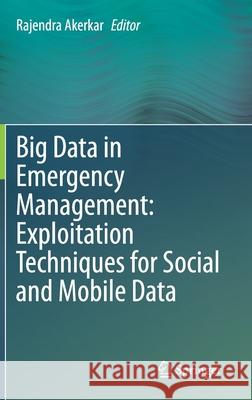Big Data in Emergency Management: Exploitation Techniques for Social and Mobile Data » książka
topmenu
Big Data in Emergency Management: Exploitation Techniques for Social and Mobile Data
ISBN-13: 9783030480981 / Angielski / Twarda / 2020 / 183 str.
Big Data in Emergency Management: Exploitation Techniques for Social and Mobile Data
ISBN-13: 9783030480981 / Angielski / Twarda / 2020 / 183 str.
cena 685,93 zł
(netto: 653,27 VAT: 5%)
Najniższa cena z 30 dni: 616,85 zł
(netto: 653,27 VAT: 5%)
Najniższa cena z 30 dni: 616,85 zł
Termin realizacji zamówienia:
ok. 22 dni roboczych
Bez gwarancji dostawy przed świętami
ok. 22 dni roboczych
Bez gwarancji dostawy przed świętami
Darmowa dostawa!
Kategorie:
Kategorie BISAC:
Wydawca:
Springer
Język:
Angielski
ISBN-13:
9783030480981
Rok wydania:
2020
Wydanie:
2020
Ilość stron:
183
Waga:
0.46 kg
Wymiary:
23.39 x 15.6 x 1.27
Oprawa:
Twarda
Wolumenów:
01
Dodatkowe informacje:
Wydanie ilustrowane











